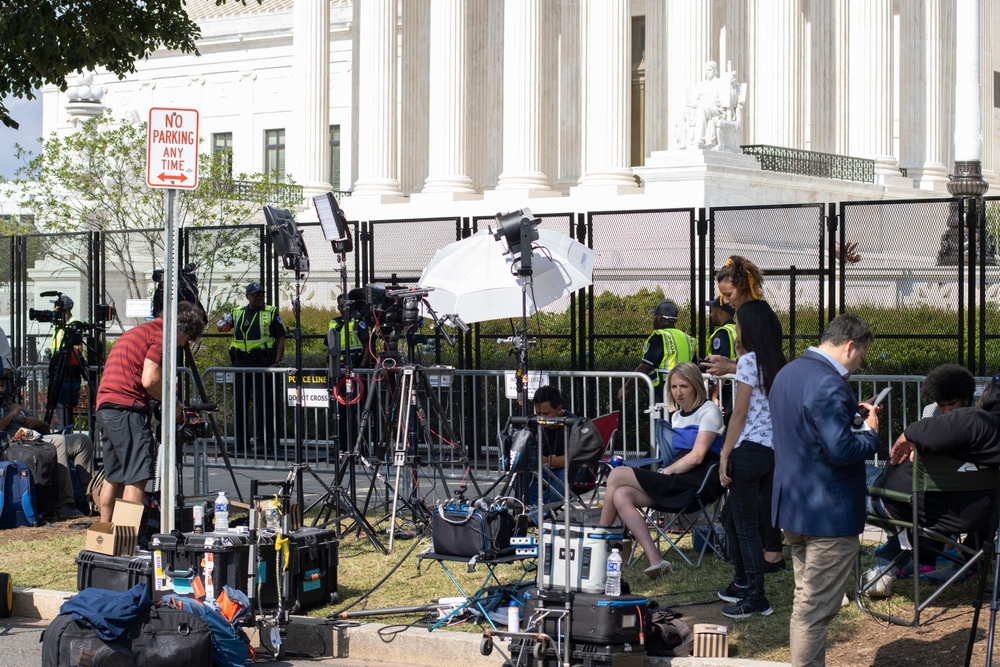Stop Analyzing the Supreme Court One Year at a Time


The Rent song “Seasons of Love” asks, “How do you measure a year?” Too often, court watchers and the media fall over themselves to offer unique angles for assessing what the Supreme Court has done in a given session. By sidelining past decisions, these approaches inevitably produce an unhelpfully skewed perception of the Court that tells us little about its actual impact on society.
If we want to evaluate the Court, we have to also consider the consequences of its past decisions. It’s one thing to acknowledge upon its release that a decision is harmful or sets back rights, but too often, court watchers ignore what happens once that decision actually takes effect. The one-year anniversary of Dobbs, the decision that overturned Roe v. Wade, provides an insightful lens for how we should still be evaluating the Court for its actions last year.
In the year since Dobbs, over a dozen states now have total bans on abortion, while more have introduced other strict restrictions. As a result, there have been countless horrific stories of medical providers withholding treatment from pregnant patients facing excruciatingly painful and life-threatening conditions out of fear they’ll be held liable under those bans. We’ve likewise seen escalating legal attacks on access to abortion nationwide, including the lawsuit challenging the FDA’s approval of mifepristone — 20 years after the fact.
All of those outcomes are thanks to the justices who still sit on the U.S. Supreme Court. Thus, the story of where this Court stands in the summer of 2023 cannot be told only according to the decisions issued since the Court convened in October.
It’s likewise important to note how some bad decisions are part of a trend of rulings from the Court that have a cumulative impact that isn’t apparent from each individual decision. This year’s decisions against unions (Glacier Northwest v. Teamsters) and environmental regulations (Sackett v. EPA), as examples, cannot be analyzed in a vacuum. Both follow on other bad decisions for workers’ rights and clean water protections that the same justices have issued in recent years. Chipping away at such protections is a common legal strategy among conservatives, perhaps best exemplified by their half-century campaign against abortion rights after Roe.
Looking forward to future cases the Court is taking up becomes just as essential. The Court’s dreadful 2022 ruling in New York State Rifle and Pistol Association v. Bruen has already been used over the past year to challenge other important gun violence restrictions. Just one year later, the Court is already considering taking up another case, one about the gun ownership rights of individuals under restraining orders for domestic violence. This case will create an opportunity for the Court to further weaken gun restrictions, making everyone even less safe as the conservatives justices chip away at gun safety regulations.
Court watchers also have a duty to fairly contextualize the cases from throughout the term to avoid creating false equivalences. It’s often too easy to just count up the cases and the number of times certain justices sided with each other and draw inaccurate conclusions downplaying the partisanship of the Court. If the justices are siding with each other on criminal cases or obscure procedural questions that preserve the status quo or have a minimal impact but they are sharply dividing on major questions of constitutional rights, those distinctions must be made clear.
That is especially true in the wake of a few major cases this session that didn’t go as disastrously as they easily could have. For example, the fact that Chief Justice John Roberts didn’t gut what was left of the Voting Rights Act in Allen v. Milligan didn’t change the fact that he likely still wants to, nor did it undo past rulings against the Voting Rights Act or do anything to ensure voting rights are any safer moving forward. It was just not an appropriate case for him to do so. Preserving the status quo of a threadbare civil rights law should not earn the Court praise.
Furthermore, court watchers do a disservice to the public when they take the justices at face value. The Supreme Court may be the highest court in the land, but the justices are nevertheless just as human as the rest of us — with biases and agendas clouding their judgments. We have learned far too much about Justice Clarence Thomas’s corruption alone to read his opinions as objective legal analyses. And as we learned this week, Justice Alito also has a billionaire benefactor of his own. The question must now be asked each and every decision: Will this outcome benefit their billionaire friends? Knowing what we know, we gain nothing by giving Thomas or others the benefit of the doubt that the Court is magically free of politicization.
There’s a reason the Court’s approval rating is at all-time lows. Conservative presidents who won with a minority of votes appointed justices handpicked by the Federalist Society to impose an extremely conservative agenda, and the justices are clearly exercising that power. Pretending otherwise and downplaying how much harm they are doing to millions of Americans might get you a few clicks, but it’s inaccurate — at best.
The impact of Dobbs was perhaps obvious, but any given decision can lead to a similar world of consequences we have not yet envisioned. Those outcomes must be part of the evaluation of the Court, and jumping to the Court’s defense without that context is premature. Besides, there’s no point in trying to shore up the Court’s integrity when it’s already made clear there’s little there to protect.
Zack Ford is the Senior Manager of Press and Editorial Communications at Alliance for Justice.
